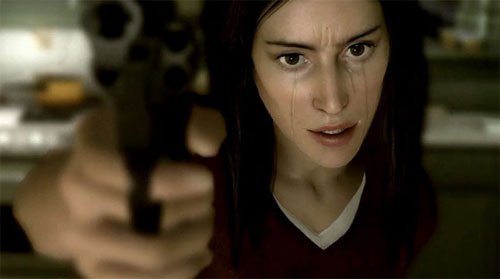Who Needs Photorealism in Games, Anyway?
By Jared Newman | Tuesday, May 26, 2009 at 12:16 pm
 Just in case the haunting wastelands of Killzone 2 and Gears of War 2 aren’t realistic enough for you, one game engine programmer suspects that true photorealism in video games is 10 to 15 years away.
Just in case the haunting wastelands of Killzone 2 and Gears of War 2 aren’t realistic enough for you, one game engine programmer suspects that true photorealism in video games is 10 to 15 years away.
I say, who cares?
To understand why, read the rest of Unreal Engine programmer Tim Sweeney’s comments to Gamasutra: “But there’s another problem in graphics that’s not as easily solvable,” he said. “It’s anything that requires simulating human intelligence or behavior: animation, character movement, interaction with characters, and conversations with characters. They’re really cheesy in games now.”
To put it another way, we may someday have video game people that look a lot like the real thing in pictures, but making them seem lifelike in practice is another story entirely.
That’s why video games are better off experimenting with other methods of representation besides mimicking reality. (Sports games should get a pass, however, because they are inherently in pursuit of realism. Plus, they tend to avoid issues of interaction and conversation that other games must deal with.)
When I think of the most powerful examples of human emotion in video games, they’re almost always abstract. The pixelated characters in Daniel Benmergui’s Storyteller are excellent examples: The eyes struck a deeper chord with me than any attempt at bone modeling.
Another method is cel-shading, as in the cartoon style seen in games like Team Fortress 2 and No More Heroes. Just like pixelation, cel-shading symbolizes human gestures without dipping into the uncanny valley (that is, the negative response that occurs when a human facsimile looks too much, but not exactly, like the real thing).
I’m certainly not the first one to make this argument, but it’s worth repeating if game developers plan to chase photorealism. I fear that the mountain is so steep to climb, we may have to endure a lot of freaky fake people before getting to the good stuff. As Sweeney suggests, the real problems may take a lot longer than a decade to solve, and10 years is already a long time.
3 Comments
Read more:
2 Comments For This Post
1 Trackbacks For This Post
-
Big Hair’s a No-Go In Video Games | Technologizer Says:
May 28th, 2009 at 5:30 pm[…] this week, I wrote about photorealism in games, and how one developer thinks video games could accurately depict thousands of facial bones in 10 […]













May 26th, 2009 at 12:50 pm
I’m not sure the “uncanny valley” is a huge problem in video games. You’re gonna kill most of what you meet in a typical video game, anyway.
May 26th, 2009 at 1:16 pm
I became concerned about certain video games becoming too realistic a few years ago when my colleagues and I were kicking around in our hotel watching G4.
A demo of a war game came on which was so realistic that it no longer seemed that it was fantasy.
Shooting at characters is very different from shooting at a simulated human being. When I play Grand Theft Auto, it’s clear that it is a game – even if it is violent.
The question is is there a point where games become so realistic that they break down human empathy and start conditioning their players to harm people? Or could someone withdrawal into an artificial world instead of developing interpersonal relationships with real people?